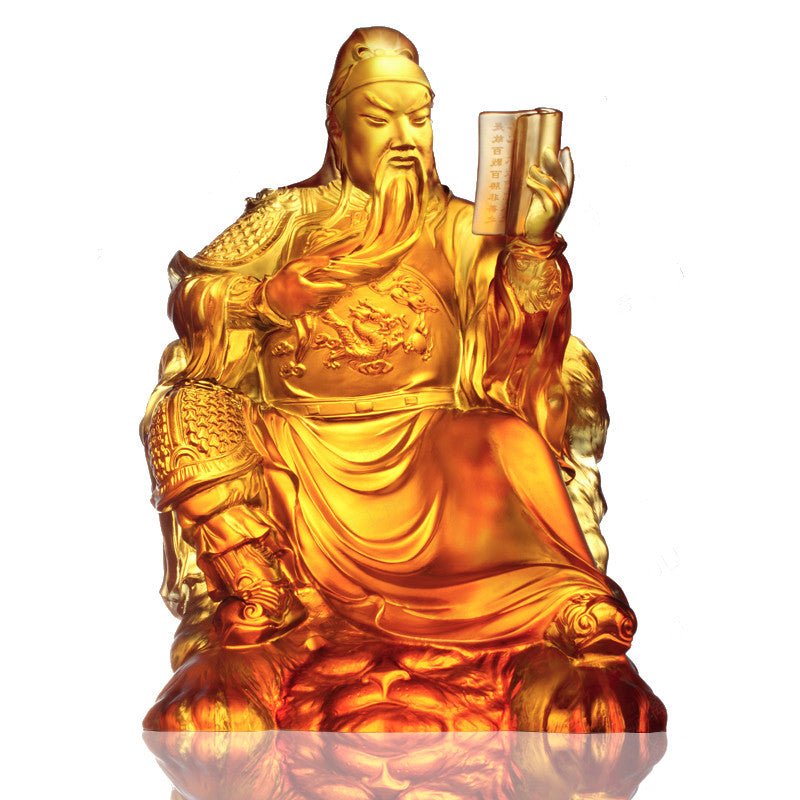
|
Design Concept Guan Gong was a famous general in the Three Kingdoms period (220–280 CE). In light of his bravery, wisdom, and military prowess—all graphically recorded in the Annals of the Three Kingdoms—later emperors awarded him various posthumous titles, including that of duke (gong). He is also widely seen as a model of Confucian virtues, especially benevolence, justice, courtesy, wisdom, faith, loyalty, righteousness, and courage. His many exploits have been handed down and extolled from generation to generation, culminating in his apotheosis during the Sui dynasty (581–618 CE). In Chinese Buddhist temples he is venerated as the bodhisattva Guan Di, one of the principal protectors of the Dharma. In Daoism he is venerated as the Guan Sheng Emperor. He is also worshipped as the God of War, and as a tutelary deity of wealth and literature. This piece is based on the famous story of Guan Gong reading at night. Guan Gong is depicted sitting on a chair draped with a tiger skin, dressed in resplendent attire; with one hand he strokes his beard, and with the other he holds a copy of The Art of War by Sun Zi, on which is engraved the line “Hence, to fight and conquer in all your battles is not supreme excellence; supreme excellence consists in breaking the enemy’s resistance without fighting” underscoring his high level of attainment in both military science and diplomacy. 關公在華人文化中是一個家喻戶曉的形象,三國時代著名的武將,因為他的驍勇善戰、智勇雙全,他英勇事蹟不止被寫入史册,還被歷代帝王追封,民間更是廣為流傳他的故事。關公義薄雲天的人格完全體現了儒家文化所強調的仁義禮智信、忠信義勇的精神。他的典故被世代傳頌,經歷了由人而王,由王而神,再由神而聖的過程。忠誠、氣節,激揚人間之義,凝聚成一種無堅不摧的力量,是重情重諾的象徵。在佛家,尊稱關帝菩薩,成為佛教中的大護法神;在道家,尊稱關聖帝君;在民間受世人的景仰和愛戴,成為民間的信仰和榜樣,被敬為武聖和財神;有文關公、武關公兩種形象。此作品以關公夜讀的典故作為題材。 文關公的形象,坐在披著虎皮的椅子上,衣著上雕有華麗的紋飾,一手捋髯,一手持書,此書是《孫子兵法》,上面刻著「是故百戰百勝,非善之善也」,其下文是「不戰而屈人之兵,善之善者也」展現關公文武雙全和儒雅的氣質。 |
|||
|
|||


